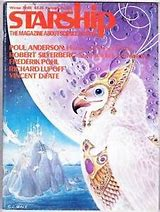Larry Niven described such problems in his Known Space future history:
"There were too many unlikely miracles left over from individual stories. For example, from World of Ptavvs came a stasis field so useful that every story set later in time must be examined for reasons why a stasis field would not solve the problem. From Neutron Star, where it was introduced to create an airtight problem in logic, comes an invulnerable spacecraft hull - same remarks. For the Ringworld floor material I had to come up with still another unreasonably strong material."
-Larry Niven, Afterthoughts IN Niven, Tales of Known Space (New York, 1975), pp. 221-223 AT p. 22.
In the case of the two Psychotechnic History instalments, we can imagine that the Diogenes, in "Entity," and Dunham, in "Symmetry," perished in accidents on their return journeys.
The Diogenes is described as:
"...a metal bubble floating through darkness and void for years on end..." (p. 171)
But it is not really that, is it? The spaceship is surrounded not by darkness but by the universe and the interstellar medium which the crew would observe and study throughout their voyage. The concluding sentence is optimistic:
"He went out of the building toward the Diogenes, shining under the stars." (p. 181)

1 comment:
Kaor, Paul!
Perhaps we can imagine a trepidation vortex destroying the "Diogenes" and killing Dunham and his duplicate. That would save appearances for the later Psychotechnic stories.
Ad astra! Sean
Post a Comment